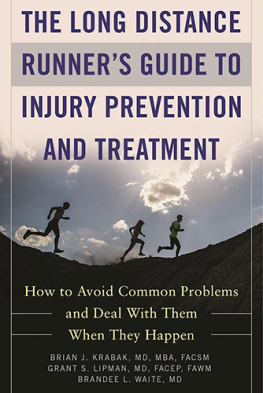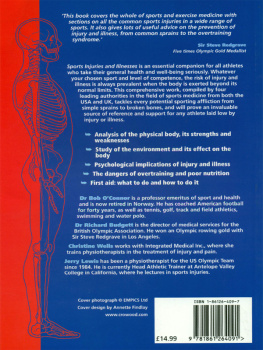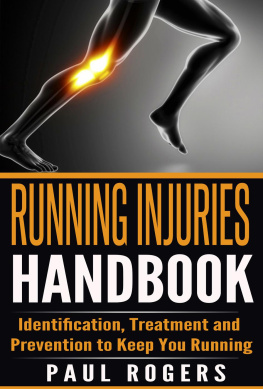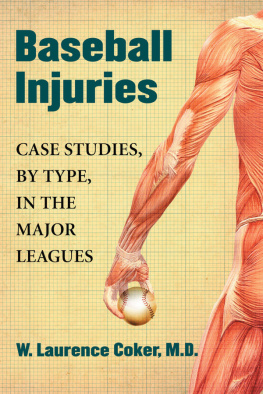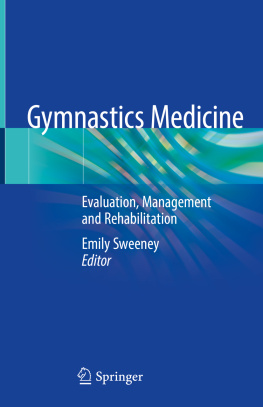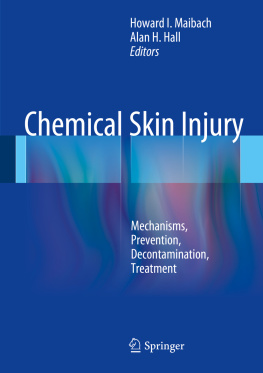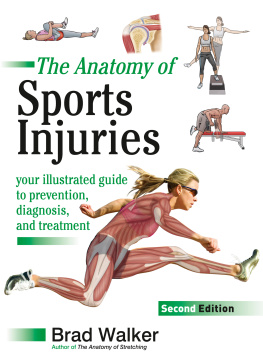Musculoskeletal injuries in military women are common. Prevention and management of such injuries are very important to sustain the fighting force and maintain military readiness. This monograph provides information about the incidence, risk factors, prevention, diagnosis, evaluation, treatment, and rehabilitation of common musculoskeletal overuse and traumatic injuries sustained by women in the military.
This monograph was prepared for military medical educational use. The focus of the information is to foster discussion that may form the basis of doctrine and policy. The opinions or assertions contained herein are the private views of the authors and are not to be construed as official or as reflecting the views of the Department of the Army or the Department of Defense.
Dosage Selection: The authors and publisher have made every effort to ensure the accuracy of dosages cited herein. However, it is the responsibility of every practitioner to consult appropriate information sources to ascertain correct dosages for each clinical situation, especially for new or unfamiliar drugs and procedures. The authors, editors, publisher, and the Department of Defense cannot be held responsible for any errors found in this book.
Use of Trade or Brand Names: Use of trade or brand names in this publication is for illustrative purposes only and does not imply endorsement by the Department of Defense.
Neutral Language: Unless this publication states otherwise, masculine nouns and pronouns do not refer exclusively to men.
Certain parts of this publication pertain to copyright restrictions.
ALL RIGHTS RESERVED 2011.
No copyrighted parts of this publication may be reproduced or transmitted in any form or by any means, electronic or mechanical (including photocopy, recording, or any information storage and retrieval system), without permission in writing from the publisher or copyright owner.
Published by the Office of The Surgeon General
Borden Institute
Fort Detrick, Maryland
US Army Medical Department Center & School
This monograph is made available with the understanding that it will not be reproduced without the permission of the publisher.
Foreword
The percentage of women and roles these women occupy in the military have greatly expanded in the last 10 years. Department of Defense data from September 2010 indicate that women comprised 14.5% of our active duty service members and 17.7% of the Reserve and National Guard service members. Whether these women are serving during a conflict or not, they are employed in a wide range of military occupations that may put them at risk for injuries. This comprehensive monograph by Drs Springer and Ross addresses the incidence, risk factors, prevention, diagnosis, evaluation, treatment, and rehabilitation of common musculoskeletal overuse and traumatic injuries sustained by women in the military.
The authors emphasize that, anatomically and physiologically, women are not the same as men; lower extremity biomechanical differences between men and women may account for gender differences in training injury rates. Women have increased pelvic width, forefoot pronation, heel valgus angulation, pes planus, external tibial torsion, and femoral anteversion. Additionally, because of the estrogen influence, women have less lean body mass and greater ligamentous laxity. The combination of anatomy and physiology appears to predispose women to a higher risk of pelvic stress fracture and anterior cruciate ligament (ACL) tears. The diagnosis of pelvic stress fracture has been reported as 1 in 367 female recruits, compared with 1 in 40,000 male recruits, and rates of ACL ruptures for female athletes range from 2.4 to 9.7 times higher than in male athletes.
This monograph is an excellent reference for lower extremity and back injuries, and contributes significantly to understanding the differences between women and men in the rate and distribution of musculoskeletal overuse and traumatic injuries sustained by our military members. This publication sheds light on the nature of the biomechanical differences between women and men, and how these differences result in notable changes in injury patterns that impact the length of healing time and ultimately impact the readiness of the unit. Drs Springer and Ross have provided us with an excellent tool for addressing the unique challenges healthcare providers face in providing the best possible careboth therapeutic and preventiveto our women military members.
S ONJA M. T HOMPSON , MD, C OLONEL , MC, US A RMY
Chief of Surgery, Carl R. Darnall Army Medical Center
Fort Hood, Texas
Acknowledgment
We thank Major Norman (Skip) Gill for his assistance with reviewing and editing this manuscript.
Introduction
The role of women in the military has increased over the years. A number of legislative changes led to the expanded role for women in todays military. The first major factor was a shift in the mid-1970s from the military draft to an all-volunteer force, which created opportunities for women to serve in greater numbers as the services sought to meet personnel goals. In the early 1990s, Congress lifted the ban on women flying combat aircraft and serving on combat ships, and during the first Clinton administration, then Secretary of Defense Les Aspin announced new rules and policies that opened more military jobs to women. Even though women are prohibited from serving in direct combat, they are finding themselves in the thick of battle because of the unpredictable nature of recent conflicts and the blurred distinction between frontline and rear areas. Whether they are serving during a conflict or not, women are employed in a wide range of military occupations that may put them at risk for injuries. Musculoskeletal injuries can be very detrimental to military women, especially if they lead to lost work time, outpatient visits, hospitalization, functional limitations, and/or disabilities.
Epidemiology
Overview of Musculoskeletal Injuries in Military Women
Army women are more likely to be disabled than men and are approximately 67% more likely than Army men to receive a physical disability discharge for a musculoskeletal disorder.1 The discharge rates for musculoskeletal conditions have been as high as 140 per 10,000 Army women per year, compared with 81 per 10,000 Army men per year.1
Military women tend to suffer a higher incidence of injuries than military men. Several studies have identified female gender as a risk factor for injury in Army basic training programs in the United States and around the world.210 For example, one study shows the cumulative injury incidence in Basic Combat Training (BCT) was 52% for women versus 26% for men. It was 30% for women versus 24% for men in Advanced Individual Training (AIT).11 Other studies showed a similar incidence for training injuries in BCT populations: approximately 50% for women and 25% for men.4,10,12 In addition, the proportion of trainees discharged from BCT for medical reasons was 12.7% for women, compared with only 5.2% for men.13 There was even reported gender differences in the utilization of medical services on a military ship.14 During a 6-month period, females were evaluated at a rate 9.2 times that of males (6.44 vs 0.70 visits per year). Only 39% of the visits were gender-specific, whereas gender-neutral conditions resulted in a female-to-male visit ratio of nearly 6:1.14
Lower extremity injuries are the most common in BCT and AIT, and account for 79% to 88% of new injuries for women.4,15,16 Lower extremity biomechanical differences between men and women may account for gender differences in training injury rates. Compared with men, women have increased pelvic width, forefoot pronation, heel valgus angulation, pes planus, external tibial torsion, and femoral anteversion. Furthermore, women often have a quadriceps angle greater than 15 degrees and a hypoplastic vastus medialis obliquus.17 There are also significant differences in physical performance after ages 10 to 12. Women reach skeletal and physiological maturity before males. They have more body fat and less lean body mass than males, which are attributed to increased estrogens in women and increased androgens in males.18


